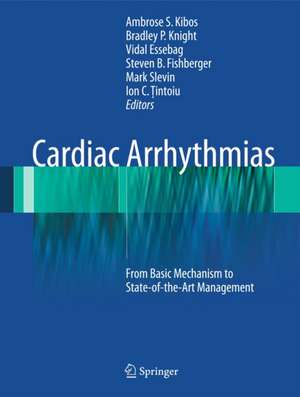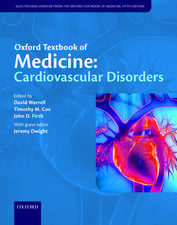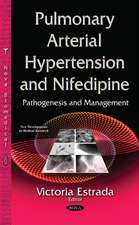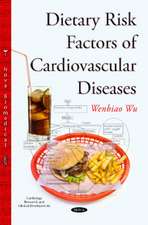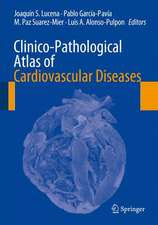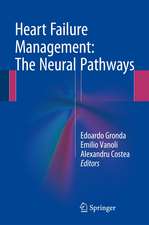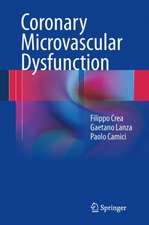Cardiac Arrhythmias: From Basic Mechanism to State-of-the-Art Management
Editat de Ambrose S. Kibos, Bradley P. Knight, Vidal Essebag, Steven B. Fishberger, Mark Slevin, Ion C. Țintoiuen Limba Engleză Hardback – 8 ian 2014
| Toate formatele și edițiile | Preț | Express |
|---|---|---|
| Paperback (1) | 1129.35 lei 38-44 zile | |
| SPRINGER LONDON – 26 sep 2016 | 1129.35 lei 38-44 zile | |
| Hardback (1) | 1595.75 lei 38-44 zile | |
| SPRINGER LONDON – 8 ian 2014 | 1595.75 lei 38-44 zile |
Preț: 1595.75 lei
Preț vechi: 1679.74 lei
-5% Nou
305.44€ • 331.89$ • 256.74£
Carte tipărită la comandă
Livrare economică 17-23 aprilie
Specificații
ISBN-10: 1447153154
Pagini: 480
Ilustrații: XXIII, 678 p. 298 illus., 206 illus. in color.
Dimensiuni: 210 x 279 x 45 mm
Greutate: 2.44 kg
Ediția:2014
Editura: SPRINGER LONDON
Colecția Springer
Locul publicării:London, United Kingdom
Public țintă
Professional/practitionerCuprins
Section I. Basics in arrhythmias anatomy.- Section II. Diagnostic methods.- Section III- Diseases associated with arrythmias.- Section IV- Treatment.
Recenzii
“This book encompasses the progress in the field of cardiac arrhythmias over the past decades. … Designed for a broad audience from trainees to seasoned electrophysiologists, the book is able to educate such an audience through comprehensive information from basic anatomy of arrhythmias and diagnostic methods to advanced, up-to-date options of treatment. … This book is an excellent and comprehensive resource for anyone interested in improving their understanding and treatment of cardiac arrhythmias.” (Daniel Masvidal, Doody’s Book Reviews, April, 2014)
Textul de pe ultima copertă
The past 50 years have witnessed the growth and evolution of clinical electrophysiology from a field whose goals were simply to understand of the mechanisms of arrhythmia to one of significant therapeutic impact. The development and refinement of implantable devices and catheter ablation have made non-pharmacological therapy a treatment of choice for most arrhythmias encountered in clinical practice.
Cardiac Arrhythmias: From Basic Mechanism To State-of-the-Art Management provides an electrophysiologic approach to arrhythmias predicated on the hypothesis that a better understanding of the mechanisms of arrhythmias will lead to more successful and rationally chosen therapy. It encompasses the anatomy of arrhythmias, diagnostic methods, comorbid diseases, and the treatment of all forms of cardiac arrhythmias. It discusses modern ablation and mapping techniques, while reviews the methodology required to define the mechanism and site of origin of arrhythmias, so that safe and effective therapy can be chosen. It will thus be of interest to all involved in the management of these patients, from clinical cardiac electrophysiologists themselves to clinical cardiologists, interventionalists, cardiac surgeons, emergency medicine physicians and researchers in basic cardiac science.
Caracteristici
State-of-the-art and novel aspects with up-to-date literature and future perspectives with both preventative and also alternative treatment options discussed
Management guidelines and novel biomarkers discussed at length provide the medical reader with detailed documentation on all aspects of this illness without having to refer to other literatures
Descriere
This book covers all the major aspects associated with pathophysiological development of cardiac arrhythmias (covering enhanced or suppressed automaticity, triggered activity, or re-entry), from basic concepts through disease association, limitations of current pharmacotherapy and implant therapies and on-going trials and analysis of new biomarkers based on current knowledge of cellular interaction and signalling. The book describes novel and state-of-the-art methods for differentiating between the major types of arrhythmia, structural abnormalities and current practice guidelines and determination of risk stratification associated with sudden cardiac death. A particular focus is on arrhythmias associated with atrial fibrillation and includes details of associations with cardiac disease, current detection, analysis and imaging and future perspectives.
